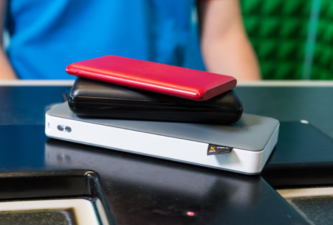How many mAh should I buy for a power bank? In the fast-developing year of 2025, technological advances have made electronic devices such as smartphones and tablets an important part of our lives. Whether it is work, study or entertainment, these devices play an indispensable role. Faced with a wide variety of power bank products on the market, people are often confused when purchasing: What capacity of power bank is appropriate? How to choose a high-quality power bank? In addition to paying attention to capacity and performance, the safety of power banks is also an important factor that cannot be ignored.
How many mAh should I buy for a power bank? In the fast-developing year of 2025, technological advances have made electronic devices such as smartphones and tablets an important part of our lives. Whether it is work, study or entertainment, these devices play an indispensable role. Faced with a wide variety of power bank products on the market, people are often confused when purchasing: What capacity of power bank is appropriate? How to choose a high-quality power bank? In addition to paying attention to capacity and performance, the safety of power banks is also an important factor that cannot be ignored.
How to choose a power bank?

① Don't blindly pursue large-capacity power banks
Hidden dangers:
In terms of portability, large-capacity power banks are usually large in size and weight, which is very inconvenient to carry. Whether it is placed in a bag or held in hand, it will add extra burden and affect the convenience of travel.
Countermeasures:
Determine the appropriate capacity according to your actual needs. If you only use it for daily commuting and emergency charging of mobile phones, headphones and other devices, you can choose a 5000-10000mAh power bank; if you need to go out for a long time and have multiple devices to charge, you can consider 10000-20000mAh products. There is no need to blindly pursue a larger capacity.
② Do not choose unsecured brands
Hidden dangers: The power bank brand may lack long-term research and development and quality control, and the after-sales service system may not be perfect. When there are quality problems with the product, consumers may find it difficult to obtain timely and effective solutions.
Countermeasures:
It is recommended to give priority to power bank brands with a profound historical heritage and strong brand strength to ensure product quality and after-sales service level. When choosing, you can refer to the brand's market reputation, user reviews and specific after-sales service policies to make more wise consumer decisions.
③ Do not choose those that have not passed 3C certification
Hidden dangers:
Power banks that have not passed 3C certification may not follow strict safety standards and specifications during the production process. There may be defects in the quality of its battery cells and circuit design, which may easily lead to safety problems such as overheating, short circuit, explosion, etc., which seriously threaten the personal and property safety of users.
Countermeasures:
When purchasing a power bank, carefully check whether the product has the 3C certification mark. This is an important basis for judging whether the product meets national standards. It is preferred to purchase power banks in regular shopping malls, supermarkets, official flagship stores and other channels. The products sold in these channels are generally subject to strict quality control, which can better ensure that the products have passed the 3C certification.
④ With anti-attenuation design
Hidden dangers:
When purchasing a power bank, if you choose a product that does not have anti-attenuation, this type of power bank may lack the necessary anti-attenuation considerations in its design. It may be broken and damaged with only a slight impact, and it is impossible to guarantee durability and stability. It is difficult to ensure that the product remains in good condition during long-term use.
Countermeasures:
Durability and stability should be used as extremely important evaluation indicators to select power banks, and high-quality products that are carefully designed for anti-attenuation and use effective anti-attenuation technology should be given priority to ensure that the power bank can be used stably for a long time.
⑤ Do not choose inferior battery cells
Hidden dangers:
If you choose a power bank with lithium-ion cells, due to its large shape and low density, it may be less portable and cannot meet some scenarios that require a thin and light power bank. At the same time, compared with lithium polymer cells, lithium-ion cells are relatively less safe and have low energy density, and may be difficult to provide stable power output, affecting the charging experience of the device.

